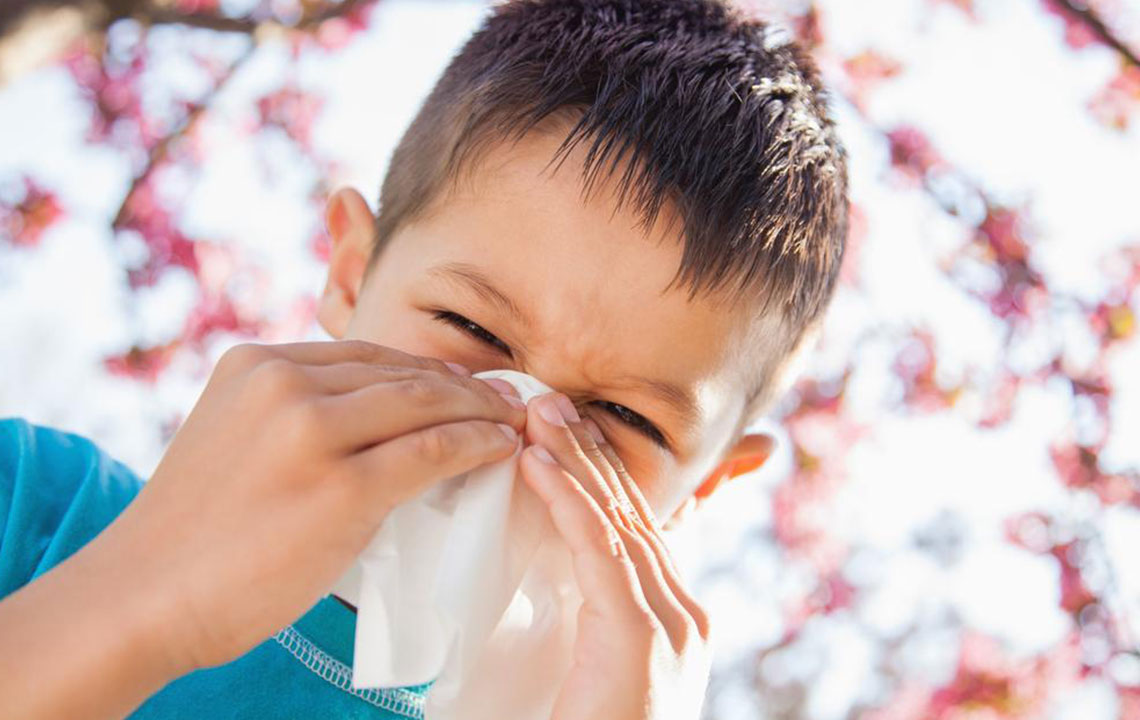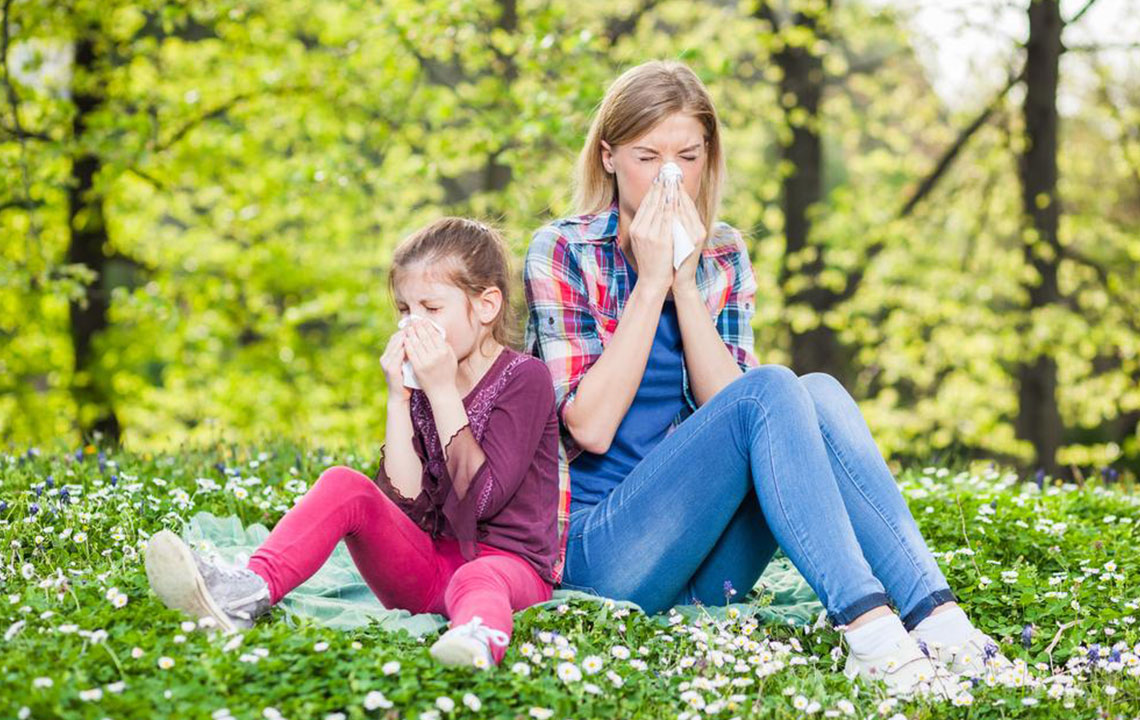Comprehensive Guide to Managing Allergies in Children: Effective Strategies and Tips
Effective allergy management in children involves creating allergen-free environments, utilizing natural remedies like ginger and turmeric, and making lifestyle adjustments. Regular cleaning, dietary supplements, and activity modifications can significantly reduce allergy symptoms. Consultation with healthcare professionals ensures safe and effective treatment. These comprehensive strategies aim to improve children’s quality of life, ensuring they can enjoy daily activities free from allergy discomfort.

Comprehensive Guide to Managing Allergies in Children: Effective Strategies and Tips
Allergies in children are a common health concern that can significantly impact their quality of life. Symptoms such as sneezing, nasal congestion, itchy or watery eyes, coughing, and skin reactions can disrupt daily routines and affect overall well-being. For many parents and caregivers, understanding how to effectively manage and alleviate these allergic reactions is essential. Implementing targeted strategies that focus on environmental control, natural remedies, and appropriate medical interventions can help reduce the frequency and severity of allergy symptoms in children.
This comprehensive guide offers detailed insights into practical and natural allergy relief methods tailored specifically for children. From maintaining a clean environment to dietary considerations and lifestyle adjustments, these tips are aimed at promoting healthier living conditions and enhancing immune resilience.
Effective allergy management involves a multifaceted approach. It starts with minimizing exposure to known allergens in the child's environment and incorporating natural, supportive remedies that bolster immunity. While medications may sometimes be necessary, many parents seek alternative or supplementary methods to help their children feel more comfortable without over-reliance on pharmacological solutions. This article provides a thorough overview of such strategies, backed by expert advice and practical recommendations.
Creating an Allergy-Friendly Environment for Children
One of the most critical steps in allergy management is maintaining a clean and allergen-free living space. Dust mites, pet dander, mold, pollen, and other airborne irritants are common triggers for allergic reactions in children. Regular cleaning routines can significantly reduce these triggers. For example, washing bed linens, pillowcases, curtains, and soft furnishings weekly in hot water effectively eliminates dust mites and mold spores. Vacuuming carpets, rugs, and upholstery with HEPA-filter vacuum cleaners ensures dust and dander are captured rather than redistributed into the air.
Additionally, reducing clutter and soft toys in bedrooms can help minimize allergen accumulation. Using allergen-proof mattress and pillow encasings creates an additional barrier against dust mites. Ensuring good indoor ventilation and controlling humidity levels—ideally between 30-50%—can prevent mold growth and reduce airborne allergens, creating safer spaces for children with allergies.
Natural Remedies to Alleviate Allergy Symptoms
Alongside environmental controls, natural remedies have gained popularity among parents aiming to soothe allergy symptoms naturally. Some of these remedies include herbal infusions, dietary supplements, and everyday household ingredients known for their anti-inflammatory and immune-boosting properties.
Ginger Infusion
Ginger has been used for centuries for its anti-inflammatory and immune-enhancing properties. To prepare a gentle, soothing ginger tea suitable for children, boil a tablespoon of freshly grated ginger along with a few cloves and a cinnamon stick in a cup of water for about five minutes. Strain the mixture and add a teaspoon of honey or a squeeze of lemon for taste. Serving this warm infusion regularly can help reduce inflammation and ease allergy symptoms. Chewing small pieces of fresh ginger throughout the day can also be beneficial for some children, helping to clear congestion and soothe irritated tissues.
Turmeric as a Natural Anti-Inflammatory
Turmeric, especially its active compound curcumin, has powerful anti-inflammatory and antioxidant effects. Healthcare professionals often recommend incorporating turmeric into children's diets to enhance immune function and reduce allergic reactions. Simple ways to include turmeric include adding a pinch of turmeric powder to soups, stews, or rice dishes. Alternatively, homemade turmeric water—by mixing turmeric powder in warm milk or water—can be given to children as a daily supplement. Always consult with a healthcare provider before starting any new supplement regimen to ensure safety and proper dosage.
Apple Cider Vinegar for Symptom Relief
Organic apple cider vinegar (ACV) is another natural remedy thought to help manage allergy symptoms due to its anti-inflammatory and detoxifying properties. A common preparation involves mixing two teaspoons of raw, organic ACV in a glass of water with a teaspoon of honey. This mixture can be consumed three times a day to help reduce mucus buildup, soothe sore throats, and support immune health. However, it's essential to use properly diluted ACV to avoid irritation to the delicate tissues of children’s throats and stomachs.
Lifestyle and Activity Modifications During Allergic Flare-Ups
Managing a child's activity level during allergy episodes is vital. Strenuous outdoor activities and sports can exacerbate symptoms like shortness of breath, wheezing, and fatigue. During high pollen seasons or peak allergy times, it's advisable to limit outdoor play and physical exertion. Staying indoors during such periods minimizes exposure to airborne allergens. Additionally, outdoor masks can be used to reduce inhalation of dust and pollen particles.
Consultation with healthcare providers is crucial when planning activities. They might recommend allergy medications or inhalers for children with persistent or severe symptoms. Keeping an emergency allergy kit at home or school—including antihistamines or epinephrine auto-injectors—is an essential safety measure for severe allergic reactions.
Additional Precautions and Considerations
Parents should also take specific precautions like minimizing exposure to chalk dust in classrooms, as it can trigger allergic reactions. Soft, fuzzy, or furry toys can harbor dust mites; therefore, opting for washable, allergen-free toys is recommended. Regular cleaning and drying of these toys prevent allergen buildup.
For children with severe allergies, healthcare professionals may suggest the use of epinephrine auto-injectors or other emergency medications. It's important for caregivers and teachers to be trained on their proper use and to recognize signs of anaphylaxis.
Finally, maintaining a healthy diet rich in fruits, vegetables, and immune-boosting nutrients supports overall health and resilience against allergies. Ensuring adequate hydration, sufficient sleep, and regular medical check-ups further contribute to effective allergy management in children.
In conclusion, managing allergies in children requires a comprehensive approach that combines environmental control, natural remedies, lifestyle adjustments, and medical guidance. Early identification of triggers and proactive strategies can help children lead healthier, more comfortable lives with fewer allergy-related disruptions.





